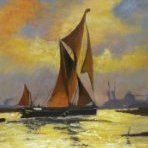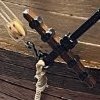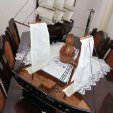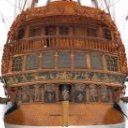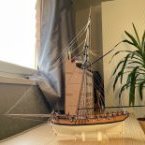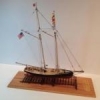-
Posts
1,586 -
Joined
-
Last visited
About hollowneck

- Birthday 06/14/1946
Contact Methods
-
Website URL
http://www.newharmonyrecords.com
Profile Information
-
Gender
Male
-
Location
Warrington, Pennsylvania
-
Interests
Music, reading, photography. Oh yeah- ship modeling!
Recent Profile Visitors
-
 hollowneck reacted to a post in a topic:
Grecian by DB789 - FINISHED - Vanguard Models - 1:64 - American Privateer Schooner
hollowneck reacted to a post in a topic:
Grecian by DB789 - FINISHED - Vanguard Models - 1:64 - American Privateer Schooner
-
 hollowneck reacted to a post in a topic:
Grecian by DB789 - FINISHED - Vanguard Models - 1:64 - American Privateer Schooner
hollowneck reacted to a post in a topic:
Grecian by DB789 - FINISHED - Vanguard Models - 1:64 - American Privateer Schooner
-
 hollowneck reacted to a post in a topic:
Did I just get scammed?
hollowneck reacted to a post in a topic:
Did I just get scammed?
-
 hollowneck reacted to a post in a topic:
Did I just get scammed?
hollowneck reacted to a post in a topic:
Did I just get scammed?
-
 hollowneck reacted to a post in a topic:
Did I just get scammed?
hollowneck reacted to a post in a topic:
Did I just get scammed?
-
 hollowneck reacted to a post in a topic:
Did I just get scammed?
hollowneck reacted to a post in a topic:
Did I just get scammed?
-
 hollowneck reacted to a post in a topic:
Did I just get scammed?
hollowneck reacted to a post in a topic:
Did I just get scammed?
-
 hollowneck reacted to a post in a topic:
Did I just get scammed?
hollowneck reacted to a post in a topic:
Did I just get scammed?
-
 hollowneck reacted to a post in a topic:
HMS Indefatigable 1794 by Daniel M - Vanguard Models - 1:64 scale
hollowneck reacted to a post in a topic:
HMS Indefatigable 1794 by Daniel M - Vanguard Models - 1:64 scale
-
 hollowneck reacted to a post in a topic:
Gaff sloop of unknown design c. 1910 by Bedford - RESTORATION - SCRAPPED
hollowneck reacted to a post in a topic:
Gaff sloop of unknown design c. 1910 by Bedford - RESTORATION - SCRAPPED
-
hollowneck started following James H
-
hollowneck changed their profile photo
-
hollowneck started following Project Build logs
-
 grsjax reacted to a post in a topic:
At what age would you feel comfortable getting a youngster a beginner ship model?
grsjax reacted to a post in a topic:
At what age would you feel comfortable getting a youngster a beginner ship model?
-
 tmj reacted to a post in a topic:
At what age would you feel comfortable getting a youngster a beginner ship model?
tmj reacted to a post in a topic:
At what age would you feel comfortable getting a youngster a beginner ship model?
-
 paul ron reacted to a post in a topic:
At what age would you feel comfortable getting a youngster a beginner ship model?
paul ron reacted to a post in a topic:
At what age would you feel comfortable getting a youngster a beginner ship model?
-
 Ryland Craze reacted to a post in a topic:
At what age would you feel comfortable getting a youngster a beginner ship model?
Ryland Craze reacted to a post in a topic:
At what age would you feel comfortable getting a youngster a beginner ship model?
-
I have a couple 8 yo grandchildren, boy(s) and girl(s). They like to look at my models but aren't ready to "craft." Two of them like art and draw; either of these two MIGHT be a candidate to entice...later. I'm giving only my direct experience, your mileage may differ! I would suggest 10-12 yo is a better time to introduce model making. My bias is to start with a plastic kit. Close supervision and involvement is obviously mandatory, even at 10. Thus far, I have many "fans and appreciators" but no "takers." The bright ones easily see the complexity and deep commitment of what Grandpa does and understandably show hesitation. I'm O.K. with that: a child's youthful impressions will last and may turn to interest and engagement in future decades...
-
 Canute reacted to a post in a topic:
Chris Watton and Vanguard Models news and updates Volume 2
Canute reacted to a post in a topic:
Chris Watton and Vanguard Models news and updates Volume 2
-
 thibaultron reacted to a post in a topic:
Chris Watton and Vanguard Models news and updates Volume 2
thibaultron reacted to a post in a topic:
Chris Watton and Vanguard Models news and updates Volume 2
-
 Nirvana reacted to a post in a topic:
Chris Watton and Vanguard Models news and updates Volume 2
Nirvana reacted to a post in a topic:
Chris Watton and Vanguard Models news and updates Volume 2
-
 Ryland Craze reacted to a post in a topic:
Chris Watton and Vanguard Models news and updates Volume 2
Ryland Craze reacted to a post in a topic:
Chris Watton and Vanguard Models news and updates Volume 2
-
 AJohnson reacted to a post in a topic:
Chris Watton and Vanguard Models news and updates Volume 2
AJohnson reacted to a post in a topic:
Chris Watton and Vanguard Models news and updates Volume 2
-
 chris watton reacted to a post in a topic:
Chris Watton and Vanguard Models news and updates Volume 2
chris watton reacted to a post in a topic:
Chris Watton and Vanguard Models news and updates Volume 2
-
Darn. Ya' snooze, ya' lose.
-
NW Ship Builder started following hollowneck
-
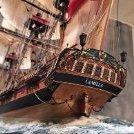
Need small repair done on jibboom of Le Superbe model
hollowneck replied to Mr. Matt's topic in Masting, rigging and sails
Matt, Please check your Private Messages*. If you haven't found a more local source for your model's restoration, I may be able to help. Judging by your photos, it appears a competent repair can be made with only a few hours work but will require an overnight period afterwards to achieve a permanent fix. You'll also likely want to have the affected rigging adjusted once the bowsprit/jibboom is fixed; this is often the case with spar repairs. * upper right corner on the home page ("messages" within the double dialogue bubbles) -
Ditto. All positive news, Chris. Your investment in the pro 3D printers will pay off. I believe there is an eager person in your vicinity that you can hire and train to help with your growing production needs. The expanding facilities and gear is one thing, a dedicated production person to keep the business humming along is another - as you well know. So, before-the-fact: Congratulations! I can't wait to open my Jack Aubrey Surprise box next year...even with the 10% import tax (called a "tariff).
-
Your creativity is a great testament to the fun that can be had in our unique hobby: yet another brilliant idea and execution, Glen. Bravo - You got the SIB "Rizz!"
- 156 replies
-
- Queen Annes Revenge
- bottle
-
(and 1 more)
Tagged with:
About us
Modelshipworld - Advancing Ship Modeling through Research
SSL Secured
Your security is important for us so this Website is SSL-Secured
NRG Mailing Address
Nautical Research Guild
237 South Lincoln Street
Westmont IL, 60559-1917
Model Ship World ® and the MSW logo are Registered Trademarks, and belong to the Nautical Research Guild (United States Patent and Trademark Office: No. 6,929,264 & No. 6,929,274, registered Dec. 20, 2022)
Helpful Links
About the NRG
If you enjoy building ship models that are historically accurate as well as beautiful, then The Nautical Research Guild (NRG) is just right for you.
The Guild is a non-profit educational organization whose mission is to “Advance Ship Modeling Through Research”. We provide support to our members in their efforts to raise the quality of their model ships.
The Nautical Research Guild has published our world-renowned quarterly magazine, The Nautical Research Journal, since 1955. The pages of the Journal are full of articles by accomplished ship modelers who show you how they create those exquisite details on their models, and by maritime historians who show you the correct details to build. The Journal is available in both print and digital editions. Go to the NRG web site (www.thenrg.org) to download a complimentary digital copy of the Journal. The NRG also publishes plan sets, books and compilations of back issues of the Journal and the former Ships in Scale and Model Ship Builder magazines.

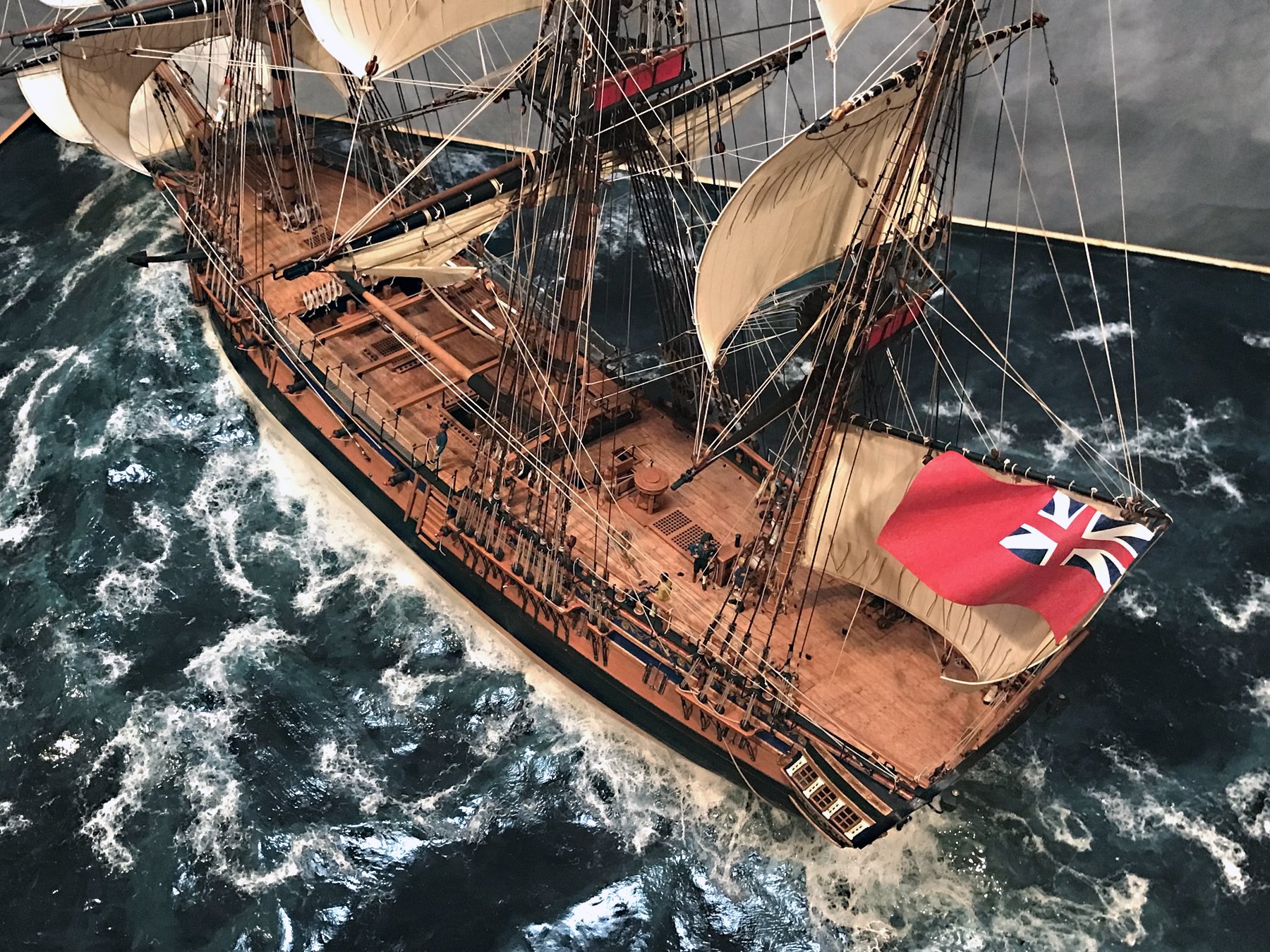

.thumb.jpg.62d1d69fed1f32364417cb1f9cdeb009.jpg)
